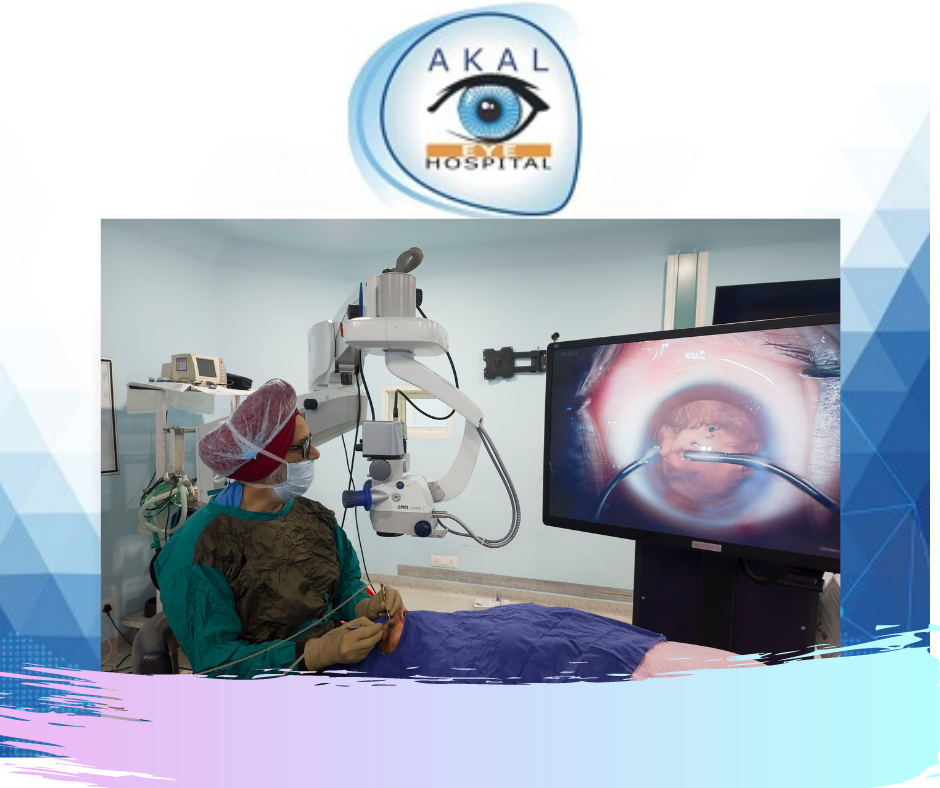


PRINCIPLE
A, 3D camera mounted on a microscope takes up images and projects them on a large screen, with the highest possible magnification with high resolution with large field. The image is split into two by the camera and seen as one by polarised glasses (Active/Passive).
The surgeon operates by looking at the screen with head-up and not into microscope (as in 2d conventional surgery). There is no distortion of image and is seen in natural colors which can be enhanced digitally to see the different tissues better.
There is unbelievable depth of focus and hence the highest level of accuracy, ease and perfection of surgery. There is minimum collateral damage to tissues like corneal endothelium because of clear visualization of images. This is the parameter of best surgery as endothelium never regrows, saving this precious tissue is very important and responsible for the transparency of the cornea. In short, it is a 3D/Robotic Heads-Up High Resolution, Surgical visualization system.
The images (videos) are same for surgeon, theatre assistant and for attendants in 3D OT/ 3D Studio made for attendants but everyone has to wear polarized glasses to see these beautiful images.
It is better for the patient as there is minimum loss of precious tissues and long-standing results of surgery are better. There is ease and perfection for the surgeon as the tissues are seen very magnified with crisp focus without any chances of error. What was impossible for the surgeon is now possible. Surgery is fast and accurate with least fatigue for patient and surgeon. As the surgeon sees with head up, hence there is no back and neck pain (ergonomics). Hardest cataracts, small pupils, dislocated natural lenses, Vitrectomy and Macular Hole surgery in retina or any tissue is handled with perfection and ease without fear of complication.
The complication rate is significantly decreased. In short, it is
* Advancement (Leap)
* Accuracy
* Precision
Every advancement and quality comes with a cost. Patient has to pay nominal extra cost to avail this surgery.
3D eye surgery was initially started for Vitreo-Retina only and then a few surgeons started Cataract surgery on this system. Akal Eye Hospital is doing all surgeries from eye Lids to retina on this system to mention a few, Oculoplasty, Lids surgery, Corneal, Cataract, Glaucoma, Squint, Vitreo-Retina or any other eye surgery including face cosmetics. Hence it has become the 1st Centre to explore this system in all branches of ophthalmology.
In conventional 2D surgery surgeon, OT assistant and attendant sees images differently.
Surgeries are comparatively more-time-consuming with more collateral damage to tissues. Image seen in 2D can be magnified to some extent only, hence compromising with perfection and accuracy.
There are situations where more modern techniques cannot be done on 2D and there are chances of a change of plans like Phaco to ECCE or SICS.
Whereas in 3D because of clear magnified digitally enhanced, high-resolution images, difficult things become easy and impossible become possible. Hardest lenses and small pupils can be handled. There is ease and perfection in any eye surgery for example in Macular Hole surgery, rotation of retina etc.
The benefits of 3D surgery cannot be enumerated or over-emphasized. It is the best surgery of today without compromising on patient tissue and surgeon’s mental ease (Heart Beats). So, we can proudly say that we have brought the future technology here today with 3D Digitally Assisted Robotic Surgery with 3D Visualization System.
